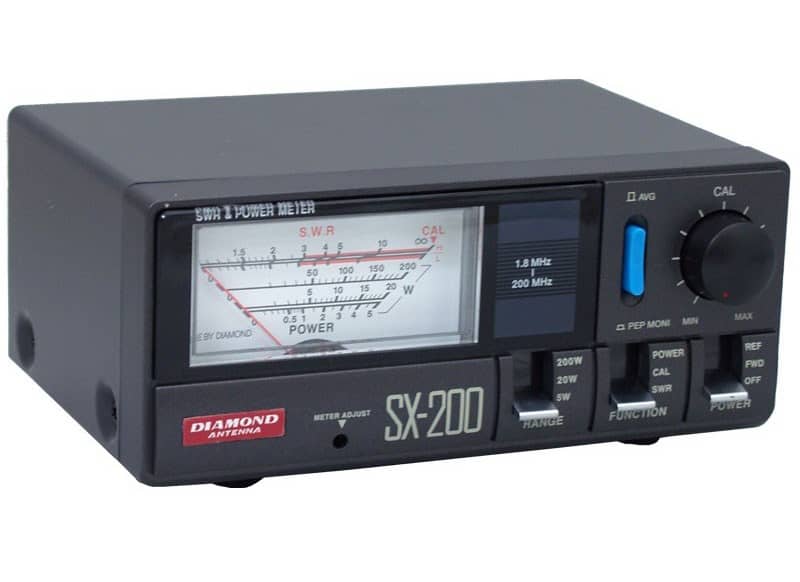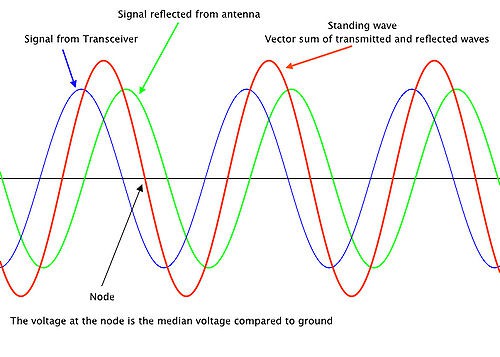What is SWR?
When there is a mismatch between the output impedance of a transmitter and input impedance of an antenna, some of the signal – in the form of a wave – is reflected back down the transmission line to the transmitter. Standing waves of electrical energy will “appear” in the transmission line. SWR is the ratio:
Amplitude (height) of the standing wave: Amplitude of an adjacent node (a central point on the waveform)
If the forward and reflected wave coincide, the vector sum (the amplitude of the resultant wave) is effectively double the height of either of them.
An excellent animation of the vector sum of forwarding and reflected waves can be found here
The most commonly used SWR measurement is Voltage SWR or VSWR. Current SWR or IVSWR is rarely used but provides the same information. The diagram above can be thought of as representing either voltage or current.
If the feedline has no loss and has the same impedance as the transmitter output and the antenna input impedance, then maximum power will be delivered to the antenna. In this case, the VSWR will be 1:1 and the voltage and current will be constant over the whole length of the feedline.
The proportion of power to the antenna that is reflected back down the feedline is known as reflected power. It is determined by the reflection coefficient <math> \rho </math> at the antenna, given by:
<math> \rho = \frac{Z_1 – Z_0} {Z_1 +Z_0} = \frac {E_r}{E_f} </math>
where:
<math> Z_1 = </math> antenna impedance
<math> Z_0 = </math> feedline impedance
<math> E_f = </math> forward voltage – towards the antenna
<math> E_r = </math> reflected voltage
<math> VSWR = \frac {1+ \sqrt (\frac{P_r}{P_f})}{ 1- \sqrt(\frac{P_r}{(P_f})} </math>
where:
<math> P_r = </math> reflected power
<math> P_f = </math> forward power – towards the antenna
Some myths about SWR
1) I can calculate SWR to a ratio of 1.000: 1
Most instruments do not operate that this level of accuracy
2) High SWR is bad
Look here for a very detailed discussion about SWR
3) My SWR meter is the best on the market so is infallible
Any instrument that is placed between the transmitter and the antenna changes the characteristics of the transmission line.
4) High SWR will interfere with my neighbor’s TV
Your transmissions are most likely to interfere with other services when:
- your transmitter puts out a broadband signal rather than a narrowband signal
- the TV station that your neighbor is watching is on a frequency that is a harmonic of your TX frequency
- you are using high power into a beam that is at the same height and directed towards your neighbor’s TV antenna
5) I can reduce SWR by shortening my transmission line
The length of a transmission line has no effect on SWR. The length of transmission can affect the loss in power from the transmitter to the antenna, depending on the frequency of transmission and the type of line being used.
How is SWR calculated?
Briefly, use an SWR meter, but better still – see the above discussion about SWR calculations until someone puts more information in this section or look at the following links:
Online SWR calculator from VE3KL



How do I adjust SWR on my Beofeng BF-F8HP handheld radio when I attach external (j-pole) antenna?